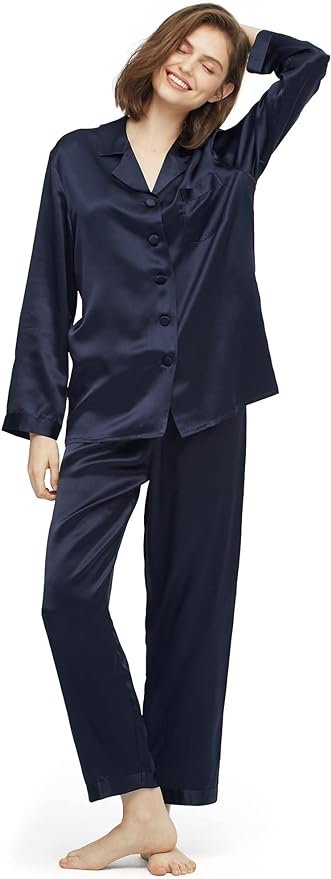The Role of Mattresses in Sleep Disorders
The quality of one’s sleep profoundly impacts overall health and well-being. One contributing factor to sleep quality is the mattress. Inadequate support and comfort can exacerbate sleep disorders such as insomnia, sleep apnea, and restless leg syndrome. The role of mattresses in sleep disorders and potential remedies deserves attention. Various mattress features and technologies aim to alleviate these conditions. Adjustable beds, for instance, can allow individuals to find the optimal sleep position that relieves symptoms such as snoring and difficulty breathing.
Cooling properties in specific mattresses, like gel-infused memory foam, ensure a comfortable sleep temperature, reducing insomnia. Furthermore, motion isolation technology helps those suffering from restless leg syndrome, as it minimises disturbances caused by involuntary movements during sleep. A closer look at the relationship between mattresses and sleep disorders opens the possibility of finding effective remedies. Choosing the best mattress can improve one’s sleep quality, reduce the impact of sleep disorders, and promote overall well-being.
The Link Between Mattresses and Sleep Disorders
Sleep disorders such as insomnia, sleep apnea, and restless leg syndrome can significantly impact an individual’s overall health and quality of life. The type of mattress a person uses has been linked to these sleep disturbances, making it an essential consideration when choosing a suitable sleep setup. This section will discuss the relationship between mattresses and these sleep disorders and the features that can help alleviate these conditions.
- Impact on Insomnia – Insomnia, characterised by difficulty falling or staying asleep, is a common sleep disorder that one’s mattress can influence. An uncomfortable or unsupportive mattress may exacerbate the problem by causing discomfort, poor spinal alignment, and pressure points. Research suggests that medium-firm beds, especially those with adjustable firmness, can promote comfort, spinal alignment, and better sleep quality. Some mattresses are also designed with temperature-regulating and motion-isolation properties. These features can help maintain a comfortable sleep environment, enabling individuals experiencing insomnia to fall asleep more quickly and stay asleep.
- Influence on Sleep Apnea – Sleep apnea, which involves interrupted breathing during sleep, can be exacerbated by body position, head elevation, and sleep surface. A mattress that does not provide adequate support for spinal alignment may encourage airway obstruction, worsening the severity of sleep apnea. Adjustable beds, which allow for personalised head and upper body elevation, have been shown to help alleviate sleep apnea symptoms. They enable individuals to sleep in a more inclined position, which may reduce the occurrence of breathing disruptions. Similarly, mattresses with targeted support for the neck and head can further contribute to maintaining clearer airways during sleep.
- Connection to Restless Leg Syndrome – Restless leg syndrome (RLS) is a neurological disorder that causes an irresistible urge to move one’s legs, especially during rest or inactivity. While the exact cause of RLS remains unknown, an uncomfortable or unsupportive sleep surface may exacerbate the condition by increasing overall discomfort during rest. Mattresses with pressure-relieving properties, such as memory foam or hybrid designs, can help alleviate the sensations associated with RLS by evenly distributing body weight and reducing pressure on sensitive areas. Moreover, motion-isolation technologies found in particular mattresses can minimise disruptions from movement, allowing individuals with RLS to enjoy a more restful night’s sleep.
Mattress Technologies for Improved Sleep
Sleep disorders can significantly affect an individual’s quality of life. To combat this issue, mattress manufacturers have developed innovative technologies to help alleviate conditions like insomnia, sleep apnea, and restless leg syndrome. Let’s explore 3-leading mattress technologies: adjustable beds for sleep disorder relief, cooling properties for heat regulation, and motion isolation for minimised disturbances.
Adjustable Beds for Sleep Disorder Relief
Adjustable beds offer various features that can relieve those suffering from sleep disorders. These beds enable users to adjust their sleeping position, which can help alleviate snoring and ease sleep apnea symptoms. They also provide customised support, allowing individuals to find the most comfortable and supportive sleeping position tailored to their needs. Additionally, adjustable beds can help reduce the symptoms of restless leg syndrome by enabling users to elevate their legs, thus promoting relaxation and increased blood circulation.
Cooling Properties for Heat Regulation
One of the critical factors affecting sleep quality is temperature regulation. Mattresses with cooling properties aim to address this issue by promoting airflow and dissipating body heat. Some mattresses use specialised materials like gel-infused memory foam or phase change materials to manage temperature effectively. Others may feature breathable covers or incorporate air channels to maintain a cool sleeping surface. A study on smart mattresses demonstrated the potential of air packs and control units to improve sleep quality significantly. By maintaining a comfortable sleeping temperature, these mattresses can help prevent sleep disorders related to overheating and excessive perspiration.
Motion Isolation for Minimised Disturbances
Motion isolation can be crucial in reducing sleep disruptions for those sharing a bed with a partner. Motion isolation ensures that one person’s movements do not adversely impact their partner’s sleep. Memory foam and pocket-sprung mattresses are two examples of mattresses that excel in motion isolation, reducing the risk of sleep disorders caused by disturbances during the night. According to an article on the effects of mattress support, proper mattress design can also decrease spinal curvature when sleeping laterally, potentially reducing low-back pain and improving overall sleep quality.
Choosing the Right Mattress
Considering Firmness and Support
When choosing a mattress, one must consider the firmness and support needed for specific sleep requirements. Individuals with sleep disorders like insomnia, sleep apnea, and restless leg syndrome may need a mattress that provides proper spinal alignment, comfort, and support for their preferred sleeping position. A mattress that is too soft or too firm may lead to discomfort and worsen sleep disorders. It’s crucial to test different mattress firmness levels to find the most suitable one for your needs.
Material Options: Memory Foam, Latex, and Innersprings
There are various mattress materials available, each offering unique benefits:
Memory Foam: Known for its contouring properties, memory foam provides excellent pressure relief and motion isolation. This material might benefit individuals with sleep disorders, particularly side sleepers and couples seeking minimal motion transfer.
Latex: Latex mattresses offer support, pressure relief, and breathability. They are a good option for individuals who prefer a responsive, bouncy feel without compromising comfort.
Innerspring: Innerspring mattresses use a coil-based support system with few other layers, providing a traditional and supportive feel. They might not offer the same level of pressure relief as memory foam or latex mattresses, but they can be suitable for back and stomach sleepers seeking firm support.
The Importance of Quality and Durability
Investing in a quality and durable mattress is crucial, as it can significantly impact sleep quality and the effectiveness of addressing sleep disorders. A mattress that loses support and comfort over time may exacerbate sleep issues. To ensure the mattress remains effective, it’s essential to select one with a solid warranty, materials that withstand regular use and is made by a reputable mattress brand.
Lifestyle Changes and Sleep Remedies
- Improving Sleep Hygiene
Improving sleep hygiene is crucial to addressing sleep disorders like insomnia, sleep apnea, and restless leg syndrome. One way to enhance sleep quality is by investing in a good mattress that supports proper spinal alignment and offers optimal comfort. In addition, maintaining a consistent sleep schedule, creating a relaxing bedtime routine, and making the sleep environment as comfortable and quiet as possible can significantly improve sleep hygiene. Limiting electronics before bedtime and avoiding caffeine and nicotine close to bedtime may also help foster a better sleep environment. - Using Sleep Aids
Sleep aids are another option for those struggling with sleep disorders. These may include over-the-counter (OTC) sleep medications, such as melatonin supplements or antihistamines, which can help induce sleepiness and improve sleep duration. A mattress with cooling properties can help regulate body temperature and keep you comfortable throughout the night. At the same time, motion isolation features can benefit couples or individuals needing minimal sleep disturbance. Other sleep aids, like white noise machines, blackout curtains, and weighted blankets, may relieve disrupted sleep. - Seeking Professional Help
If lifestyle changes and sleep aids do not alleviate the symptoms of sleep disorders, it may be necessary to seek professional help. A doctor can recommend further tests, such as a sleep study, to diagnose the underlying issue accurately. For some individuals, cognitive behavioural therapy may be an effective treatment option. In more severe cases, prescribed medications or specialised devices, like a continuous positive airway pressure (CPAP) machine for sleep apnea, might be recommended. A healthcare professional can guide you through the various treatment options and help you choose the most suitable approach based on your specific sleep disorder and needs.
Frequently Asked Questions
- How do mattresses impact sleep disorders?
Mattresses can play a significant role in sleep disorders, as a poorly chosen mattress can exacerbate existing conditions or create new problems. Support, firmness, and materials can significantly influence sleep quality and duration. For instance, a medium-firm mattress can help promote proper spinal alignment, leading to more restful and comfortable sleep. - What features help reduce insomnia?
It is essential to focus on comfort and sleep hygiene to reduce insomnia. Key features that can help include using a mattress with adjustable firmness settings, proper support, and materials that promote a cooler sleep environment. Cognitive behavioural therapy for insomnia (CBT-I) is generally recommended alongside a suitable mattress to help control or eliminate negative thoughts and actions. - Which mattress technologies assist with sleep apnea?
Mattresses with specific features and technologies can assist with sleep apnea. A suitable mattress should provide proper support for the spine and neck to help maintain an open airway. Some of the best mattresses for sleep apnea include adjustable beds, memory foam, and latex mattresses that conform to the body’s shape and provide targeted support. - How can adjustable beds alleviate restless leg syndrome?
Adjustable beds enable the user to elevate their legs during sleep, which can help alleviate the uncomfortable sensations often associated with restless leg syndrome. Elevating the legs can improve circulation, reducing the symptoms and discomfort experienced during the night. - What role does cooling play in sleep quality?
A cooler sleep environment can significantly impact sleep quality, as it helps to regulate body temperature and prevent overheating. Overheating can lead to discomfort and interrupted sleep. Therefore, mattresses with cooling properties, such as those made with breathable materials or infused with cooling gel, can help promote a more comfortable and refreshing sleep experience. - How does motion isolation improve sleep?
Motion isolation refers to a mattress’s ability to prevent movement on one part of the mattress from being felt elsewhere. This feature is particularly beneficial for people who share a bed, as it can minimise the disturbance caused by a partner’s movements during the night. A mattress with sound motion isolation can contribute to a more restful and uninterrupted sleep experience.



